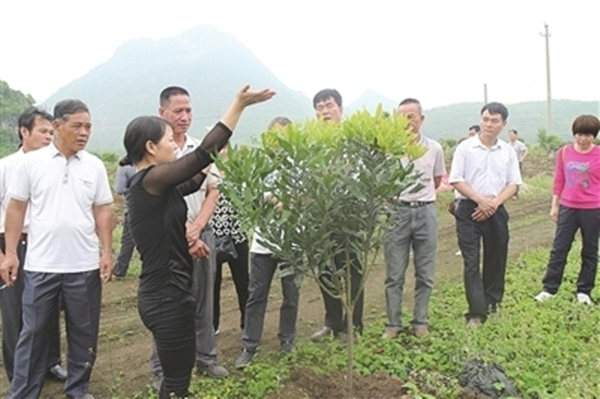Heshan city’s approach to targeted poverty alleviation
GPIG by Fang Rongrong, March 1, 2017 Adjust font size:
As one of the eight counties of Guangxi Province with a particular focus on poverty alleviation, how has Heshan city succeeded in reducing its poverty rate by more than 10 percent?

In the fight against poverty, Heshan city has developed two effective policies. The first is a form of cooperative venture in which poor families participate as stockholders. The second is a form of public and transparent management of poverty-alleviation funds in which local villagers participate. Both policies have proved very successful. By November 11th last year, the city had already exceeded its poverty alleviation target, reaching 102.2 percent of the quota.
Stockholding in a cooperative
Since 2014, Heshan city has operated a structure involving commercial companies, cooperatives, and individual poor families. Poor families can obtain shares in a cooperative in three ways: by buying them, by offering their labor to the cooperative, or by assigning their land to the cooperative. The cooperative then signs agreements with commercial companies which buy the shareholders’ agricultural output.
The cooperative carries the responsibility for managing profits and losses. In the first three years, 10 percent of the profits will be used to issue dividends to poor families. In the fourth year, the poor families will receive a further "payment" proportionate to their shareholding, which will be in the form of goods or products.
Since the foundation of the cooperative, many poor families have bought shareholdings in the cooperatives by using their allocation of poverty alleviation funds.
To encourage industrial development and alleviate poverty, Heshan city worked out the 2016 Measures for Rewarding Targeted Poverty Alleviation which provided subsidies for companies, industries and cooperatives to employ poor people, to the sum of 300 yuan (U.S. $44) per month per capita.
Heshan city prefers to encourage local cooperatives in order to ensure that poverty alleviation funds are put to proper use, and to help the poor build up their incomes and improve their lives.